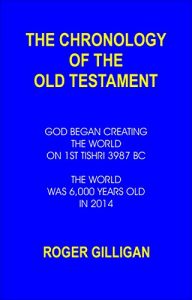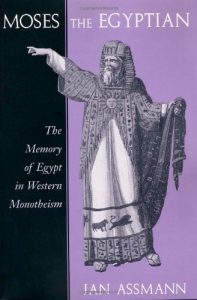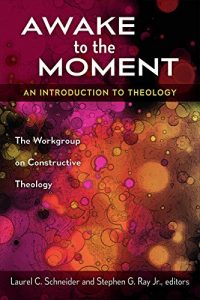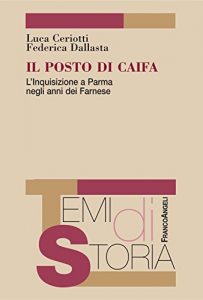I 99eBooks è una directory di eBook. Cerchiamo e classificato intorno alle eBooks Web per te!
Tutti i diritti riservati. I libri e libri elettronici sono di proprietà dei rispettivi proprietari.
The Chronology of the Old Testament (English Edition)
The Old Testament has a large amount of chronological data in it, such as the age of certain men when their sons were born, the number of years between various events, and the number of years that kings reigned. This type of information extends throughout the Old Testament and can be used to work out the number of years from the beginning of the Old Testament to its end. One of the purposes of this book is to calculate when the world will be 6,000 years old. This date is important because many Jews think that their Messiah will return at this time, and many Christians think that Jesus Christ will return at this time.
The chronology begins with Adam, and then continues to the Flood, Abraham, the Exodus, the judges, the kings of Israel and Judah, the captivity in Babylon, the proclamation by Cyrus king of Persia which allowed the Jews to return to Jerusalem and rebuild the temple, and from that time until the rebuilding and dedication of the second temple. The chronology ends at this time, but it was several years earlier, during the reign of Darius king of Media, when the angel Gabriel gave to Daniel the prophecy of the seventy weeks. This prophecy gives the number of years from the going forth of the command to rebuild Jerusalem until the cutting off of the Messiah, and it is certain that the Messiah in Gabriel’s prophecy was Jesus Christ. So if the year when Jesus Christ was put to death is known, and the chronology of the Old Testament is properly understood, it becomes possible to discover when the world was created and when it will be 6,000 years old.
In 'The Date of the Crucifixion' the author proves that the crucifixion of Jesus Christ took place on 14th Nisan, Passover Eve, in AD 31, and using this fact he shows that God began creating the world at the beginning of 1st Tishri, the first day of the Jewish civil year, in 3987 BC. In that year 1st Tishri began at sunset on Saturday 13th September in the proleptic Gregorian calendar, so the first day of the world's existence was the first day of a Jewish week, as indicated in Genesis chapter 1. It then follows that the world was 6,000 years old on 1st Tishri 2014.
This chronology is significantly different from all previous chronologies and has three remarkable symmetries of time. The first was from when Abraham arrived in Egypt until Moses led the Israelites out of Egypt at the Exodus, and this period was 430 years. Jacob and his family went to Egypt to escape the famine in Canaan 215 years after Abraham went there, so Jacob went there exactly in the middle of the 430-year period. This symmetry has been noted by several other chronologists.
The second symmetry was from the Exodus to the fall of Jerusalem to the Babylonians, at which time the Jews were taken into captivity and deported to Babylon. This period was 1,000 years, a very significant period of time, and David, probably the most important Israelite who was born during this period, was born exactly in the middle of it.
The third symmetry was from the creation of the world to the cutting off of the Messiah as prophesied by Gabriel, and this period was 4,016 years. Abraham, who was probably the most important person in the whole of the Old Testament, was born exactly in the middle of this period. These last two symmetries were discovered by the author of this book and are found only in this chronology. It is clear that God put these features in the Old Testament to identify which of the many chronologies of the Old Testament that have been published is correct.
The chronology of the kings of Israel and Judah from Rehoboam son of Solomon to the dedication of the second temple is particularly difficult, and the book has twelve time charts, each covering 40 years, which should help the reader to more fully understand this part of the chronology.
The chronology begins with Adam, and then continues to the Flood, Abraham, the Exodus, the judges, the kings of Israel and Judah, the captivity in Babylon, the proclamation by Cyrus king of Persia which allowed the Jews to return to Jerusalem and rebuild the temple, and from that time until the rebuilding and dedication of the second temple. The chronology ends at this time, but it was several years earlier, during the reign of Darius king of Media, when the angel Gabriel gave to Daniel the prophecy of the seventy weeks. This prophecy gives the number of years from the going forth of the command to rebuild Jerusalem until the cutting off of the Messiah, and it is certain that the Messiah in Gabriel’s prophecy was Jesus Christ. So if the year when Jesus Christ was put to death is known, and the chronology of the Old Testament is properly understood, it becomes possible to discover when the world was created and when it will be 6,000 years old.
In 'The Date of the Crucifixion' the author proves that the crucifixion of Jesus Christ took place on 14th Nisan, Passover Eve, in AD 31, and using this fact he shows that God began creating the world at the beginning of 1st Tishri, the first day of the Jewish civil year, in 3987 BC. In that year 1st Tishri began at sunset on Saturday 13th September in the proleptic Gregorian calendar, so the first day of the world's existence was the first day of a Jewish week, as indicated in Genesis chapter 1. It then follows that the world was 6,000 years old on 1st Tishri 2014.
This chronology is significantly different from all previous chronologies and has three remarkable symmetries of time. The first was from when Abraham arrived in Egypt until Moses led the Israelites out of Egypt at the Exodus, and this period was 430 years. Jacob and his family went to Egypt to escape the famine in Canaan 215 years after Abraham went there, so Jacob went there exactly in the middle of the 430-year period. This symmetry has been noted by several other chronologists.
The second symmetry was from the Exodus to the fall of Jerusalem to the Babylonians, at which time the Jews were taken into captivity and deported to Babylon. This period was 1,000 years, a very significant period of time, and David, probably the most important Israelite who was born during this period, was born exactly in the middle of it.
The third symmetry was from the creation of the world to the cutting off of the Messiah as prophesied by Gabriel, and this period was 4,016 years. Abraham, who was probably the most important person in the whole of the Old Testament, was born exactly in the middle of this period. These last two symmetries were discovered by the author of this book and are found only in this chronology. It is clear that God put these features in the Old Testament to identify which of the many chronologies of the Old Testament that have been published is correct.
The chronology of the kings of Israel and Judah from Rehoboam son of Solomon to the dedication of the second temple is particularly difficult, and the book has twelve time charts, each covering 40 years, which should help the reader to more fully understand this part of the chronology.

















